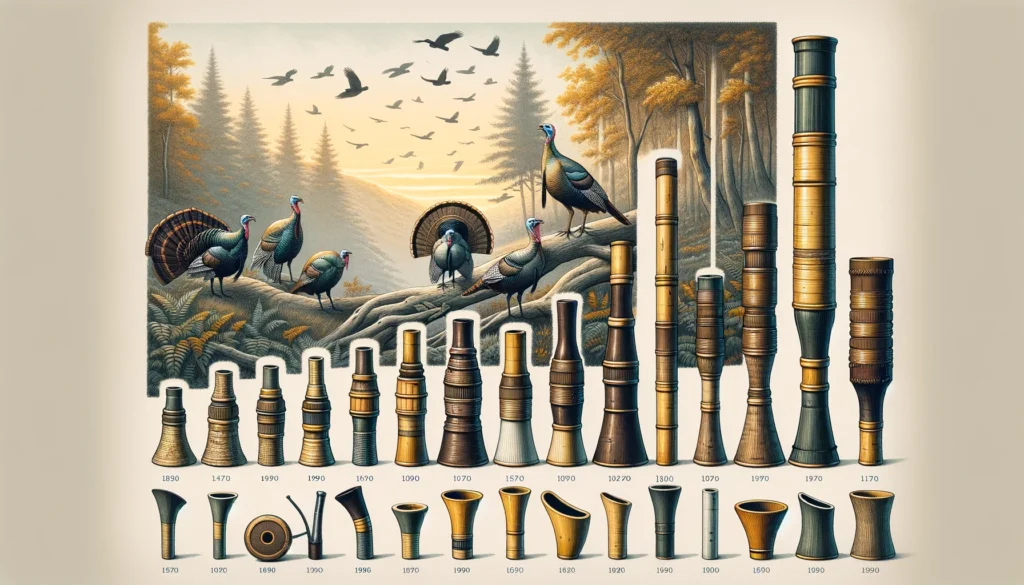The Evolution of Tube Calls: Mastering Turkey Sounds Across Generations

Table of Contents
Introduction
The journey of tube-type turkey calls from rudimentary instruments to sophisticated hunting tools is a fascinating tale of innovation, tradition, and craftsmanship. These devices, essential for mimicking the diverse vocalizations of turkeys, have evolved significantly over the years. This article explores their historical development, highlighting key milestones and the impact on hunting practices.
Origins and Early Designs
The genesis of tube calls can be traced back to early attempts by hunters to replicate turkey sounds more accurately. Initial models were simple, often homemade from available materials like bamboo, reeds, and even pieces of metal or plastic tubing, emphasizing the ingenuity of hunters in pursuit of a more effective call.
Innovation and Refinement
As the popularity of turkey hunting grew, so did the demand for more reliable and versatile calls. The mid-20th century marked a period of significant innovation, with hunters and craftsmen experimenting with various materials and designs to improve sound quality and ease of use.
Material Advancements
The introduction of synthetic materials, particularly for the reed component, was a game-changer. Materials like latex allowed for a broader range of sounds and improved durability, making the calls more appealing to a wider audience of hunters.
Commercial Success
The latter half of the 20th century saw the commercialization of tube calls, with patented designs leading to mass production. This era brought about standardized quality and accessibility, allowing more hunters to experience the benefits of using tube calls.
Modern Developments
Today, tube-type turkey calls are more sophisticated than ever, incorporating advanced materials and acoustic principles to mimic turkey sounds with astonishing realism. Despite technological advancements, the core essence of these calls remains rooted in the tradition of closely observing and understanding turkey behavior.
The Role of Technology
Modern manufacturing techniques and materials science have enabled the production of tube calls that are not only more effective but also easier to use, catering to both novice and experienced hunters.
Preservation of Tradition
Amidst innovation, there remains a strong market for vintage and artisan-crafted tube calls, cherished for their craftsmanship and the connection they provide to the rich history of turkey hunting.
Conclusion
The evolution of tube-type turkey calls reflects the dynamic interplay between tradition and technology in the hunting world. As we look forward to future developments, the legacy of these calls continues to resonate in the hearts of turkey hunters everywhere, bridging generations through the shared pursuit of the perfect call.
Frequently Asked Questions (FAQs)
1. What is the primary purpose of a tube-type turkey call?
To mimic the various sounds of a turkey, including yelps, clucks, purrs, and gobbles, to attract them during hunting.
2. Can beginners effectively use tube-type turkey calls?
Yes, many modern tube calls are designed with beginners in mind, offering ease of use and detailed instructions.
3. What materials are modern tube calls typically made from?
Modern tube calls are often made from a combination of plastics, metals, and synthetic reeds, like latex, for durability and sound quality.
4. Why do some hunters collect vintage tube calls?
For their craftsmanship, historical significance, and the unique, authentic sounds they produce.
5. How have tube calls changed turkey hunting?
Tube calls have made turkey hunting more accessible and successful by providing hunters with the ability to produce a wide range of realistic turkey sounds, improving their chances of attracting birds.
The story of tube-type turkey calls is a testament to the enduring spirit of innovation within the hunting community, showcasing how a simple concept can evolve into an essential tool through creativity, experimentation, and a deep respect for nature.







